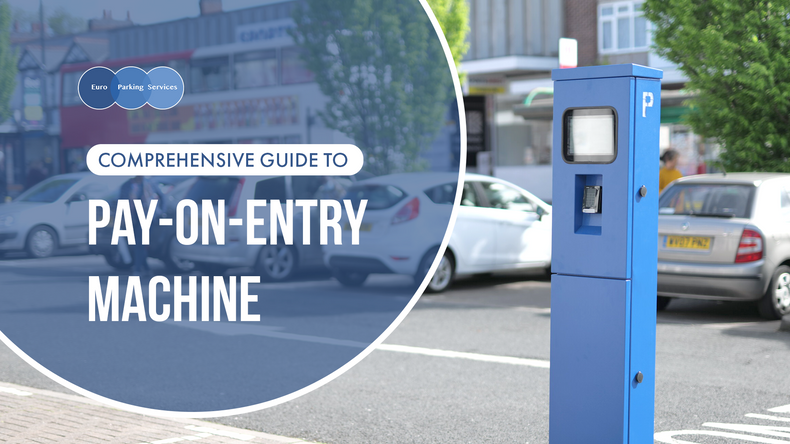Comprehensive Guide to Pay on Entry Machine

Managing parking spaces can be challenging for sectors such as businesses, industrial parks, retail parks, hotels, supermarkets, and healthcare facilities. For these sectors, pay-on-entry machines have emerged as an effective solution that streamlines parking spaces for parking operators. This guide explains how the machines work, the problems they solve, and how to implement them effectively.
What are Pay-on-entry machines?
Once the vehicle enters the parking space, pay-on-entry machines allow motorists to pay for parking spaces, simplifying the payment process. After payment, motorists receive a printed ticket that must be placed on the front windshield or dashboard so that it is visible to parking wardens. This process not only collects revenue for the site but also prevents misuse of the parking space.
How do Pay-on-entry machines work, and how to use them?
Pay-on-entry machines are usually installed at car parks and garages. They accept various payment options, including coins, cash, debit cards, and credit cards. The machines also provide e-tickets, enabling users to check their transaction records. Euro Parking Services, a renowned parking management company in the UK, offers pay-on-entry machines with an IP67 rating, making them resistant to weather and vandalism thanks to their anti-vandal screens.
These machines use advanced technology to prevent motorists from sharing paid parking tickets, ensuring accurate revenue collection. Many machines feature user-friendly multilingual interfaces, accommodating motorists from diverse backgrounds.
If a person is new to use these machines, then here are some simple steps to use them:
→ Approach the machine and enter the details of the vehicle.
→ Select the desired parking duration.
→ Choose a payment method to complete the transaction.
→ After payment, motorists are added to the permit list automatically and receive a ticket via email (e-receipt). The ticket includes details such as the parking tariff validity.
Benefits
- Efficient revenue generation:
These machines provide a stable income source and ensure all parked vehicles have been paid. Streamlining operations and reducing revenue loss due to unpaid parking.
- Reduces need for attendants:
Automated solutions reduce the need for extra staff members, enabling parking operators to allocate resources more efficiently.
- Real-time data collection for flexible pricing:
Advanced machines track:
- Number of new vehicles entering the car park
- Successful transactions
- Daily revenue
- Active and inactive devices
- Total revenue generated
This data is crucial for operators to make informed decisions about pricing adjustments based on availability.
- Enhanced user experience:
Reliable machines with easy-to-use interfaces provide accessible payment options, improving overall user satisfaction.
- Prevention of parking misconduct:
These machines identify vehicles that have not paid or overstayed their parking duration, issuing parking charges when necessary.
Tips for effective implementation
- Choose Right Location
Install machines at accessible and convenient locations to maximise usage.
- Ensure clear signage
Provide clear instructions, including payment options, to reduce confusion among users and enhance their experience.
- Regular maintenance
Perform routine checks to ensure machines function correctly, reducing downtime and improving reliability.
- Offer Multiple Payment Methods
Provide options like debit cards, credit cards, and mobile payments to cater to a larger audience.
Success Story
At a well-known retail park in Birmingham, parking abuse was a significant issue: motorists often parked without paying. Euro Parking Services assessed the site and implemented its pay-on-entry machines, ANPR cameras, and the RingGo mobile application. The user-friendly machines offered multiple payment options, ensuring only paying motorists could park. ANPR cameras monitored entry and exit times, issuing charges for overstays. Additionally, the RingGo app allowed motorists to pay without interacting with machines. These solutions reduced unauthorised and overnight parking, enhanced user experience, and increased revenue.
Pay-on-entry machines streamline parking payments across multiple sectors by automating processes, reducing staffing needs, and optimising resource utilisation. These machines are transforming the parking industry, making them indispensable for those aiming to stay ahead of the curve.
